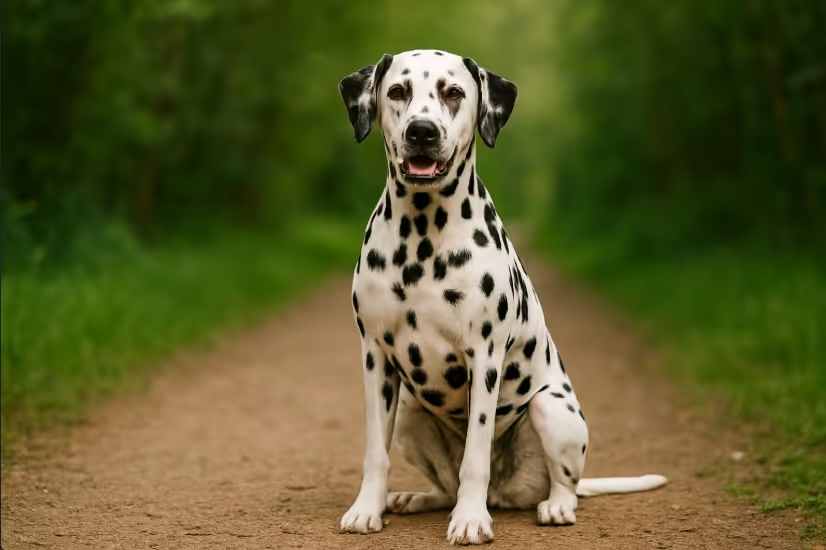The Dalmatian is a striking breed best known for its black or liver-colored spots and energetic personality. Originally bred as a carriage dog, this athletic and alert breed thrives in active households. Dalmatians are loyal, playful, and protective — making them excellent companions for runners, hikers, and families with older children. Their intelligence and independence can be both a strength and a training challenge.

The Dalmatian’s origins trace back to the Dalmatia region of modern-day Croatia, where it was used as a guard dog and traveling companion. Its most iconic role, however, came during the 1800s in England, where it ran alongside horse-drawn carriages to guard against threats. Dalmatians later became staples in firehouses for their alertness and compatibility with horses. Today, they are beloved for their unique look and energetic spirit.
Despite their short coat, Dalmatians shed consistently year-round. Weekly brushing with a rubber curry mitt or bristle brush helps manage loose hair. Bathe as needed with a gentle shampoo, and focus on ear hygiene to prevent infections.
Routine Care:
Dalmatians are extremely energetic and require 90+ minutes of daily activity. They thrive on structured exercise and mental stimulation. Bored Dalmatians can become destructive or anxious.
Great Activities Include:
Dalmatians are intelligent but can be headstrong. They respond best to positive reinforcement and firm consistency. Early socialization is vital to curb stubbornness and reduce reactivity.
Training Focus Areas:
Dalmatians require a balanced, high-protein diet and benefit from foods low in purines to help avoid urinary stone formation.
Feeding Guidelines:
Due to breed-specific health and temperament considerations, seek out experienced breeders or reputable rescues.
What to Ask:
1. Are Dalmatians good with kids?
Generally yes — especially with older children. They’re playful and affectionate, but their energy may overwhelm toddlers.
2. Are Dalmatians prone to deafness?
Yes. Up to 30% of Dalmatians are born deaf in one or both ears. Responsible breeders screen puppies with BAER testing.
3. Do Dalmatians bark a lot?
They’re moderate barkers — they’ll alert you to strangers or boredom but aren’t excessive.
4. Can Dalmatians be left alone?
Not for long stretches. They can develop separation anxiety and become destructive without adequate mental/physical stimulation.
5. Do they get along with other pets?
With early socialization, yes. They may chase small animals due to strong prey drive.